In the Past
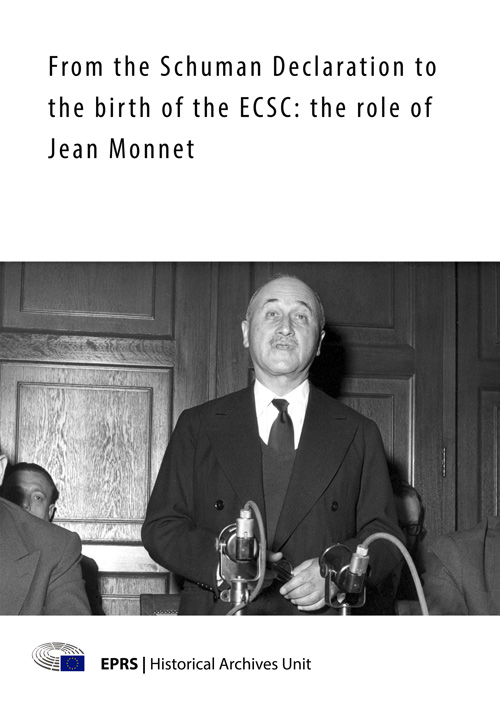
Jean Monnet
This study, published to commemorate the sixtieth anniversary of the Schuman Declaration, is intended as a tribute to Jean Monnet, the man who inspired this historical speech, created a route-map for European integration, and subsequently served as the first President of the High Authority of the new European Coal and Steel Community. The publication of this document, which draws upon the European Parliament’s Historical Archives, is intended to provide new insights into the aspirations and work of the Community’s 'founding fathers' and to promote awareness of Parliament's archives.
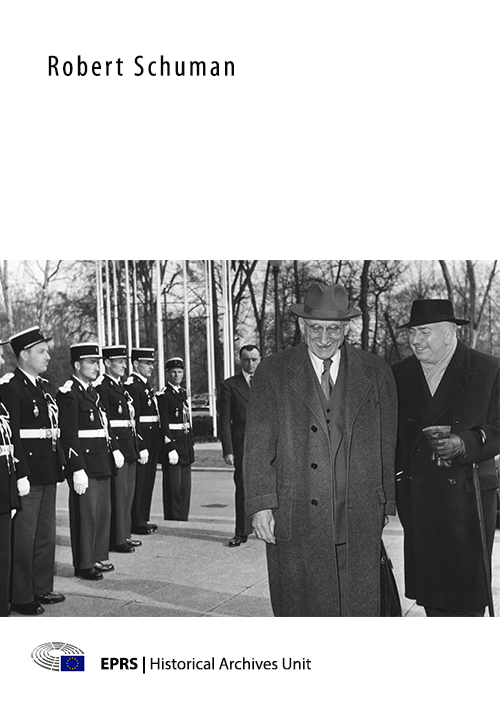
Robert Schuman
Just over sixty years ago, Robert Schuman was elected president of the European Parliamentary Assembly. This French politician is regarded as one of the 'founding fathers' of what is now the European Union. With his declaration of 9 May 1950, considered the founding act of the European integration process, Robert Schuman assumed political responsibility for what would become the European Coal and Steel Community. He was president of the European Parliamentary Assembly from 1958 to 1960, an institution that represented the Europeans, had the power of executive scrutiny and unified three Communities. Schuman's efforts to build a strong and united Europe continue to influence and shape the European Union to this day.
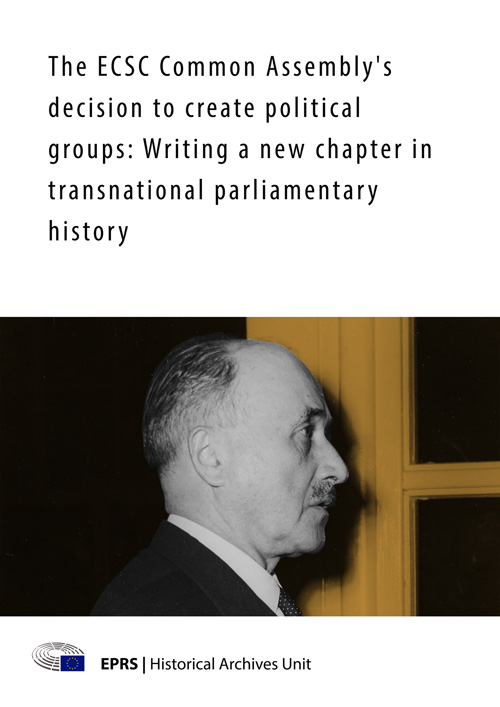
Creating political groups in the ECSC's Common Assembly
When the forerunner of today's Parliament, the Common Assembly of ECSC was established in 1952, the creation of political groups was not envisaged. However, in June 1953 the Common Assembly unanimously decided to allow the creation of political groups and thus became the world's first international assembly organised into political groups. This briefing analyses this decision by bringing together political and historical literature on the topic, as well as original sources from the Parliament's Historical Archives that record considerations and motives for the decision to create political groups. It illustrates the complementary cultural, historical, organisational and financial reasons for this decision and demonstrates that for the first ECSC Common Assembly members, it was highly important to take account of political affiliations in order to highlight the supranational character of the newly emerging Assembly. Finally, the briefing highlights that common work within the political groups was essential in helping to overcome early difficulties between the Assembly's members with different national backgrounds.
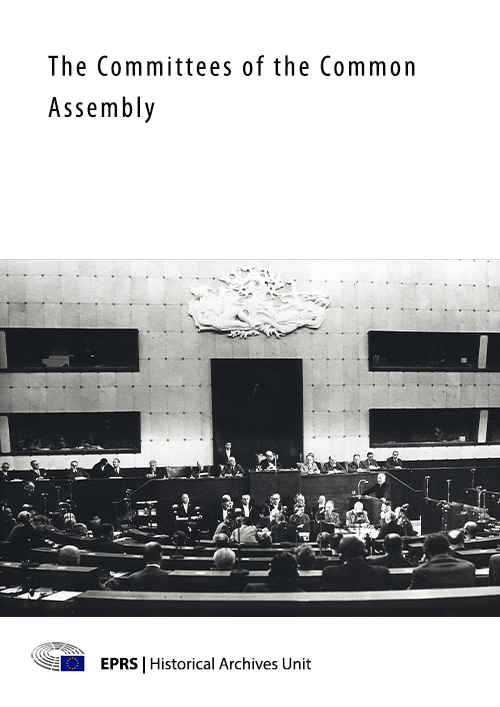
The Committees of the Common Assembly
This paper is addressed in particular to all who have a professional, academic or personal interest in the history of the European Communities and is intended to provide them with an outline of the activities carried out by the committees of the Common Assembly in the five years of its existence (1953-1958), as recorded in the documents held in the Archives and Documentation Centre. This study provides a comprehensive account of the work of the following committees: the Committee on the Common Market, the Committee on Investments, the Committee on Social Affairs and Committee on Safety and Rescue in Mines, Committee on the Political Affairs and External Relations of the Community and Sub-Committee on Commercial Policy, and the Committee on Transport, the committee on Rules of Procedure and the Organisation committee and the Committee on the Administration of the Assembly and the Community budget.
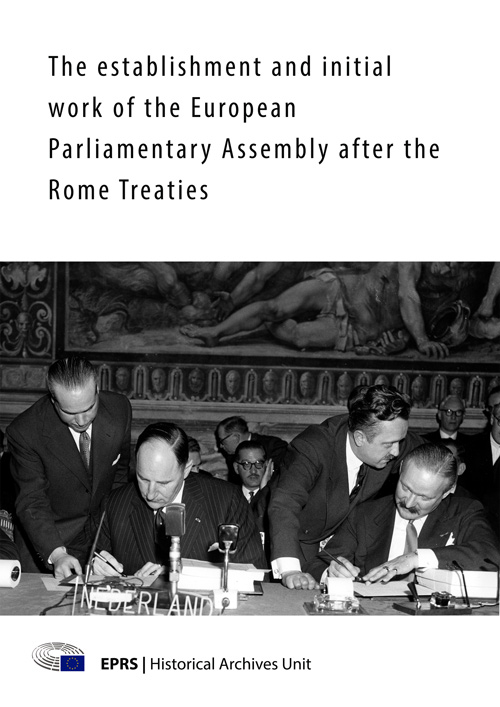
The European Parliamentary Assembly after the Rome Treaties
The first Community assembly was the 'Common Assembly' provided for in the ECSC Treaty, which operated as part of that Community from 1953 to 1958. The European Parliamentary Assembly was its historic and legal successor, but the establishment of the EEC and Euratom under the 1957 Rome Treaties meant that the Common Assembly was a single body serving the three Communities, which each had their own Treaties which differed in their distribution of power. The European Parliamentary Assembly immediately seized upon this issue and made it the subject of one of its first reports, which was drawn up over a relatively short time-scale. This publication deals with that report, setting it in the context of the broader debate on the nature and future of integration addressed at the sittings of the part-session of March 1958.
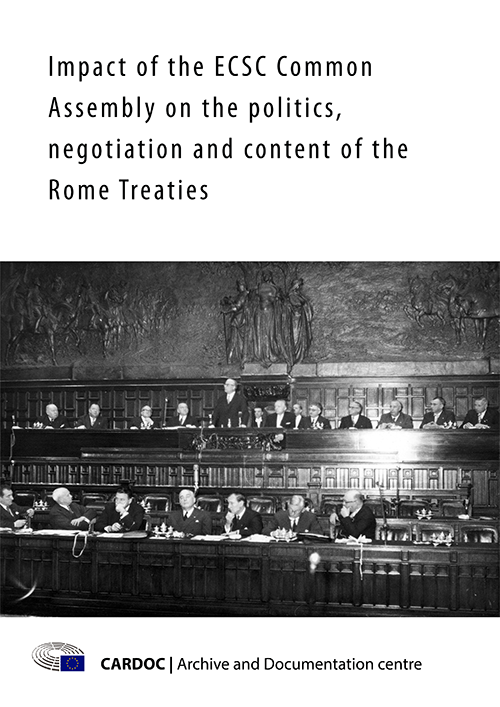
The ECSC Common Assembly and the Treaties of Rome
This study was published upon the fiftieth anniversary of the signing of the Rome treaties, a key event in EU history which gave a new impetus to the process of economic and social reconstruction and the integration under way in Europe since the Second World War. This study, with prefaces by the President and the Secretary-General of the European Parliament, brings together documents of the ECSC Common Assembly, illustrates the positions taken by the Common Assembly on the negotiations which led to the signature of the Treaties of Rome, the EEC Treaty and Euratom Treaty. Many of the documents annexed are previously unpublished.

Walter Hallstein
When Walter Hallstein became the first President of the European Economic Community Commission in 1958, a long career already lay behind him: legal scholar, university professor, research manager, diplomat and German government representative at the conferences drafting the founding treaties of the European Coal and Steel Community and then the European Economic Community. The federalist ideas he developed and the emphasis he placed on supranational institutions remain among his most important legacies. Equally significant was his administrative capacity to build an institution of a completely new type and to anticipate policies that seemed utopian at the time but turned out to be necessary many years later. This impetus to push for further integration earned Hallstein strong opposition from several national leaders, and eventually led to his precipitous departure. This briefing recalls three principal aspects of Hallstein's life: as a scholar and research administrator, as a protagonist of German foreign policy and, of course, as a crucial architect of the early period of European integration.

The European Charter of Fundamental Rights
The drafting and adoption of the Charter of Fundamental Rights marked an important milestone in the European Union’s history and an important development for its constitutional legitimacy. The Charter, solemnly proclaimed by the Presidents of the Parliament, Commission and Council in Nice on 7 December 2000, became legally binding in December 2009 when the Lisbon Treaty came into force. It is the first EU "Bill of Rights" and is a modern and up-to-date codifications of all values, including civil, political, economic and social rights. It constitutes a formidable tool in bringing the European Union closer to its people and creating a citizens’ Europe. This study, published five years after the proclamation of the Charter, looks back over the main milestones in the Charter's history and explains the key role that it plays in protecting the fundamental rights and freedoms of EU citizens.
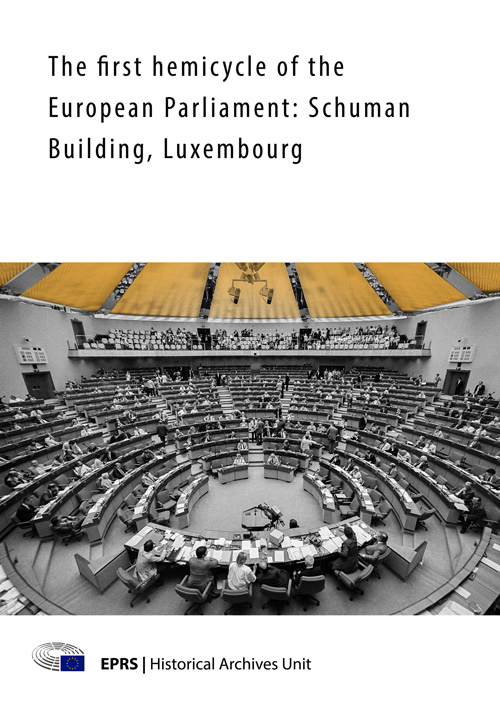
The first hemicycle of the European Parliament
In its early years, the European Parliament held its plenary sittings in different locations, made available by other institutions or by the host countries. It was only in 1973, with the construction of the Schuman Building in Luxembourg, that the Parliament finally had its own premises with a hemicycle (debating chamber) for its plenary meetings. Planned in the 1960s, with construction starting in 1970, the initial plans had to be adjusted to accommodate the expected enlargement of the Communities. In the 1970s, the hemicycle was used regularly for plenary sessions, but with the increase in the number of Members following the 1979 direct elections, the chamber was no longer large enough to hold all Members. The Luxembourg hemicycle is noted for the artistic value of its decor, in particular the zinc bas-relief created by the Turin-based NP2 Group. Thanks to interviews with the artists, this briefing provides details of the artwork, including the story of how the Italian company came to be commissioned by the Belgian contractor fitting out the chamber.
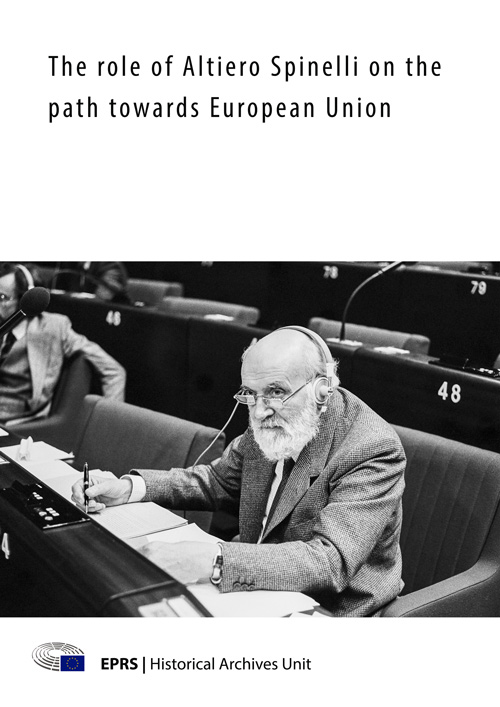
Altiero Spinelli
On 14 February 1984, the European Parliament adopted the draft 'Treaty establishing the European Union', also known as the 'Spinelli Draft' after the rapporteur-coordinator of the parliamentary committee that drafted the text. Two years later, on 23 May 1986, Altiero Spinelli died in Rome. Now, 30 years on, Spinelli and the draft treaty he championed are considered to be key elements in the European Union's integration process. Yet the draft treaty was just the culmination of the political career of Spinelli - a man who was able to imagine a united Europe even before the European Community was born. He pursued the goal of establishing a political union between the countries of Europe with determination and confidence to the very end and the final step was to be taken within the institution that Spinelli had always considered to be the most representative and best suited to playing a leading role in the integration process - the European Parliament. The development of Spinelli's thought and work can be better understood by considering first the arguments contained in the Ventotene Manifesto and then his activities in the European Federalist Movement, right up until his entry into the European institutions as a Commissioner and then Member of the European Parliament.
The accession of Finland and Sweden
In 2015 Finland and Sweden, like Austria, celebrated the twentieth anniversary of their accession to the European Union. This historical study focuses specifically on the entry into the Union of the first two countries. Distinct economic and social policies, as well as issues of neutrality during the Cold War, had kept the two Nordic countries from developing closer relations with the European Community. However, economic and geopolitical changes allowed this situation to evolve into a deeper and mutually beneficial relationship. This study is part of the European Union History Series, which is primarily based on documents preserved in and made available to the public by the Historical Archives of the Parliament and the archives of other EU institutions.
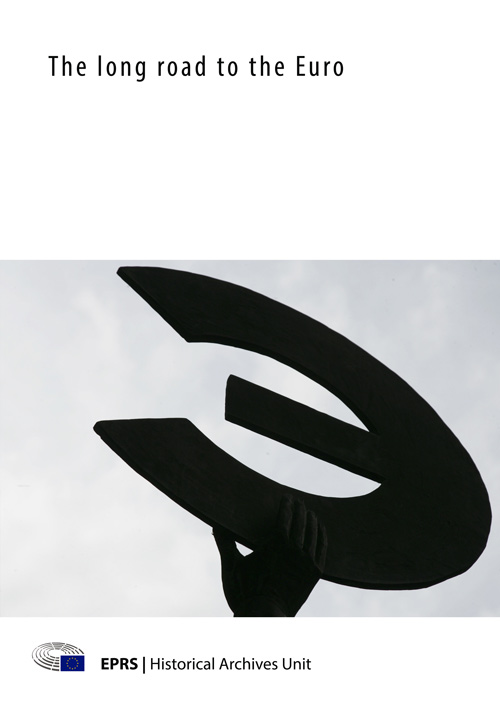
The long road to the Euro
With this publication the Historical Archives of the European Parliament celebrated the tenth anniversary of the Euro (2011). It retraces the historic route which led to the creation of the single currency and aims to contribute to a better understanding of the long process towards monetary integration and perhaps help current perceptions of the situation the Euro is now facing. The first five chapters illustrate chronologically the development of monetary integration while the final chapter looks at the historical aftermath of the previous chapters and attempts to identify the practical aspects of a supranational currency. This study is based mainly on parliamentary sources, resolutions and parliamentary debates published in the Official Journal, and the parliamentary reports and minutes of the Economic and Monetary Committee, which can be consulted at the Archive and Documentation Centre in Luxembourg.
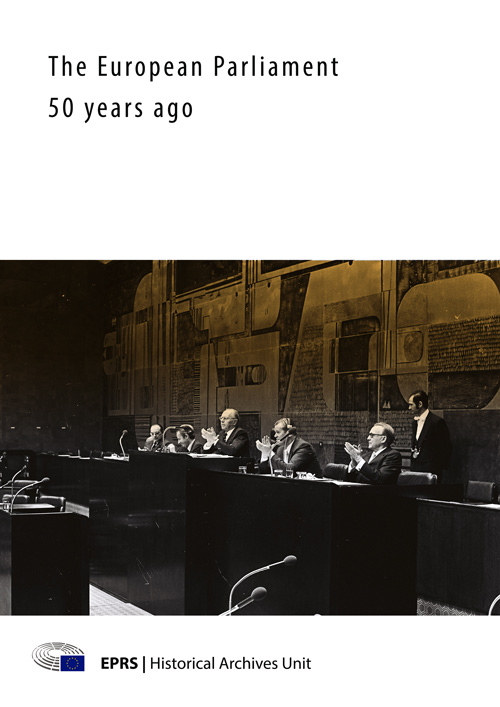
The European Parliament 50 years ago
This publication was written in 2008 as part of the celebrations for the fiftieth anniversary of the first meeting of the European Parliamentary Assembly, forerunner of the European Parliament. Using documents in the Parliament’s Historical Archives, this study outlines the structure of the Parliamentary Assembly established by the Treaties of Rome and describes its early activities, commemorating the most historic debates of the first three months of the Parliamentary Assembly’s activities, in particular the initial Parliament report on the Community treaties. This study aims to set these Parliamentary debates in the context of the broader debate on the nature and future of integration addressed at the sittings of the session of March 1958. The final Chapter deals with the origins of the perennial problem of the seat of the Community institutions and shows how difficulties in that regard are very long-standing.
Relations between the Holy See and the European institutions
Pope Francis' visit to the European Parliament on 25 November 2014 was a milestone in the dialogue between the European institutions and the Vatican State - a dialogue that reflects the principles underpinning the Lisbon Treaty, the European Neighbourhood Policy and the diplomatic activities of the Union. Relations have existed between the Holy See and the European institutions from the beginning, but the more formal relations in the '50s and '60s have since become more structured. The major address delivered by Pope John Paul II at the Plenary Sitting of 11 October 1988 has been the high point of this dialogue so far. The Vatican has also institutionalised its relations with the EU and its participation in European activities through the Apostolic Nunciature and through the activities of the Commission of the Bishops' Conferences of the European Union.